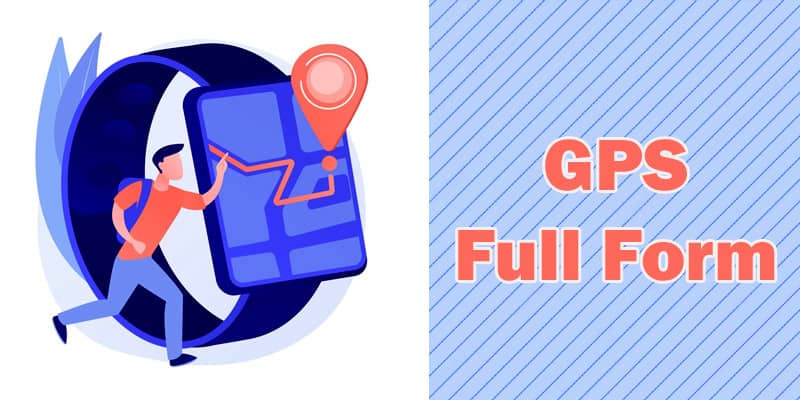Full-Form of GPS is Global Positioning System.
What is GPS?
-
- GPS is a global navigation satellite system that uses geolocation and time information to calculate and measure its position on Earth.
- GPS is also referred to as NAVSTAR GPS (Navigation System with Time and Ranging).
- A GPS receiver needs to receive data from four or more GPS satellites without any obstacles. In GPS, the user does not need to transmit any data.
- The U.S. Department of Defense developed GPS, basically designed to assist soldiers and military vehicles, but it was made accessible to anyone with a GPS receiver after some decades.
- The first GPS was developed in the 1960s to assist the ships of the US Navy in navigating the oceans more accurately.
Structure of GPS
The three blocks that configure the structure of GPS are as follows:
- Space segment (GPS satellites)- There are 24 GPS satellites deployed on six orbits around the earth at an altitude of approximately 20000km (four GPS satellites per orbit) and around the earth at 12-hour intervals.
- Control segment (Ground control stations)- It controls satellite orbit to measure the deviation of the satellites from the orbit and GPS timing.
- User segment– It refers to users that use navigation signals received from the GPS satellites to calculate their position and time.
GPS Positioning
- The signal of time is received by the GPS receiver from a GPS satellite.
- The time difference between the GPS time and the clock on which the GPS receiver receives the signal will be calculated to generate the distance from the receiver to the satellite. The same process is repeated with the other three available satellites.
- Anatomic clocks are incorporated into satellites to generate on-the-spot time information that is very precise compared to the time generated by clocks incorporated into GPS receivers.
Types of GPS Tracking Systems
There are two types of GPS tracking systems: passive and active. A passive system finds the location and stores it as data based on an internal memory card that can be downloaded and analyzed. In addition to location, time, velocity, average speed, and total mileage can be monitored. An active system tracks the real-time location. This type of system works well for tracking vehicles, airplanes, etc.
Global positioning system, full form of GPS, can be applied in generally 5 major categories:
- Location – determining a position
- Navigation – showing the route from one location to another
- Timing – bringing precise timing to the world
- Mapping – creating maps of the world
- Tracking – monitoring object or personal movement
Who Uses GPS?
GPS systems are currently used in a variety of applications such as aviation, surveying, mining, marine, recreation, agriculture, and military. to make life more convenient, productive, and secure.
Uses of GPS
- Lost people or pets can be easily tracked through GPS with a single click, sending an alert to the caretaker or guardian.
- The SOS alarm utilizes the navigation system installed on cellphones or computers to help with notifications when any close one presses it.
- Traveling to an unfamiliar location becomes easy as GPS acts as a guide, helping you reach the location.
- GPS is used for projecting temperature levels both on the ground and in the atmosphere.
Lower operating costs are incurred by using GPS to find the most efficient route to reach the destination. - A GPS tracking system is also used for route optimization. Route optimization includes the number of turns, real-time traffic congestion, and the best way to reach the stop.
Conclusion
GPS satellites provide service to civilian and military users. The civilian service is freely available to all users on a continuous, worldwide basis. The military service is available to U.S. and allied armed forces as well as approved government agencies.
GPS allows the user to obtain, record, and manipulate precise positions on the face of the earth. This basic functionality can be used to accomplish the core tasks listed on the previous screen.
If you know the coordinates of your destination, then the GPS can show you the distance and direction to that point.
GPS position measurement relies on very precise time measurement. Because of that, the general GPS user can tell time with near-atomic clock accuracy.

